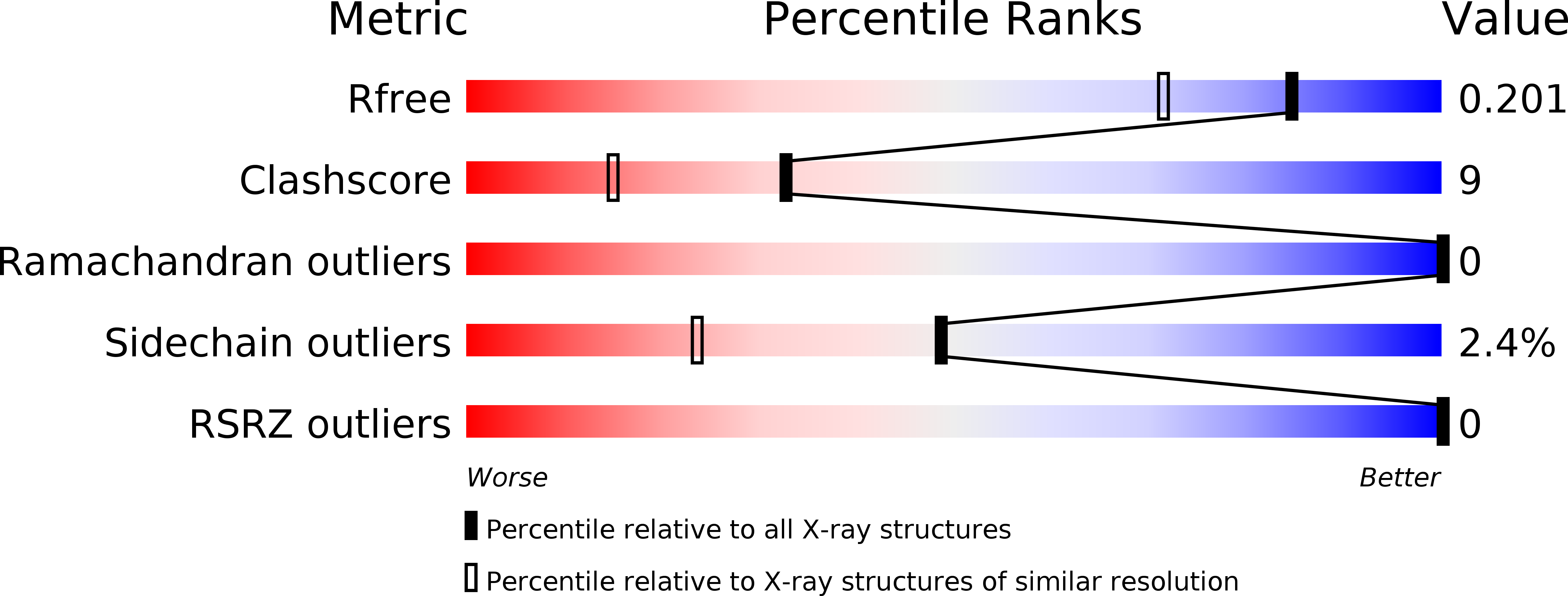Remarkably high activities of testicular cytochrome c in destroying reactive oxygen species and in triggering apoptosis
Liu, Z., Lin, H., Ye, S., Liu, Q.Y., Meng, Z., Zhang, C.M., Xia, Y., Margoliash, E., Rao, Z., Liu, X.J.(2006) Proc Natl Acad Sci U S A 103: 8965-8970
- PubMed: 16757556
- DOI: https://doi.org/10.1073/pnas.0603327103
- Primary Citation of Related Structures:
2AIU - PubMed Abstract:
Hydrogen peroxide (H(2)O(2)) is the major reactive oxygen species (ROS) produced in sperm. High concentrations of H(2)O(2) in sperm induce nuclear DNA fragmentation and lipid peroxidation and result in cell death. The respiratory chain of the mitochondrion is one of the most productive ROS generating systems in sperm, and thus the destruction of ROS in mitochondria is critical for the cell. It was recently reported that H(2)O(2) generated by the respiratory chain of the mitochondrion can be efficiently destroyed by the cytochrome c-mediated electron-leak pathway where the electron of ferrocytochrome c migrates directly to H(2)O(2) instead of to cytochrome c oxidase. In our studies, we found that mouse testis-specific cytochrome c (T-Cc) can catalyze the reduction of H(2)O(2) three times faster than its counterpart in somatic cells (S-Cc) and that the T-Cc heme has the greater resistance to being degraded by H(2)O(2). Together, these findings strongly imply that T-Cc can protect sperm from the damages caused by H(2)O(2). Moreover, the apoptotic activity of T-Cc is three to five times greater than that of S-Cc in a well established apoptosis measurement system using Xenopus egg extract. The dramatically stronger apoptotic activity of T-Cc might be important for the suicide of male germ cells, considered a physiological mechanism that regulates the number of sperm produced and eliminates those with damaged DNA. Thus, it is very likely that T-Cc has evolved to guarantee the biological integrity of sperm produced in mammalian testis.
Organizational Affiliation:
Institute of Biomedical Informatics, School of Medicine, Tsinghua University, Beijing 100084, China.
















